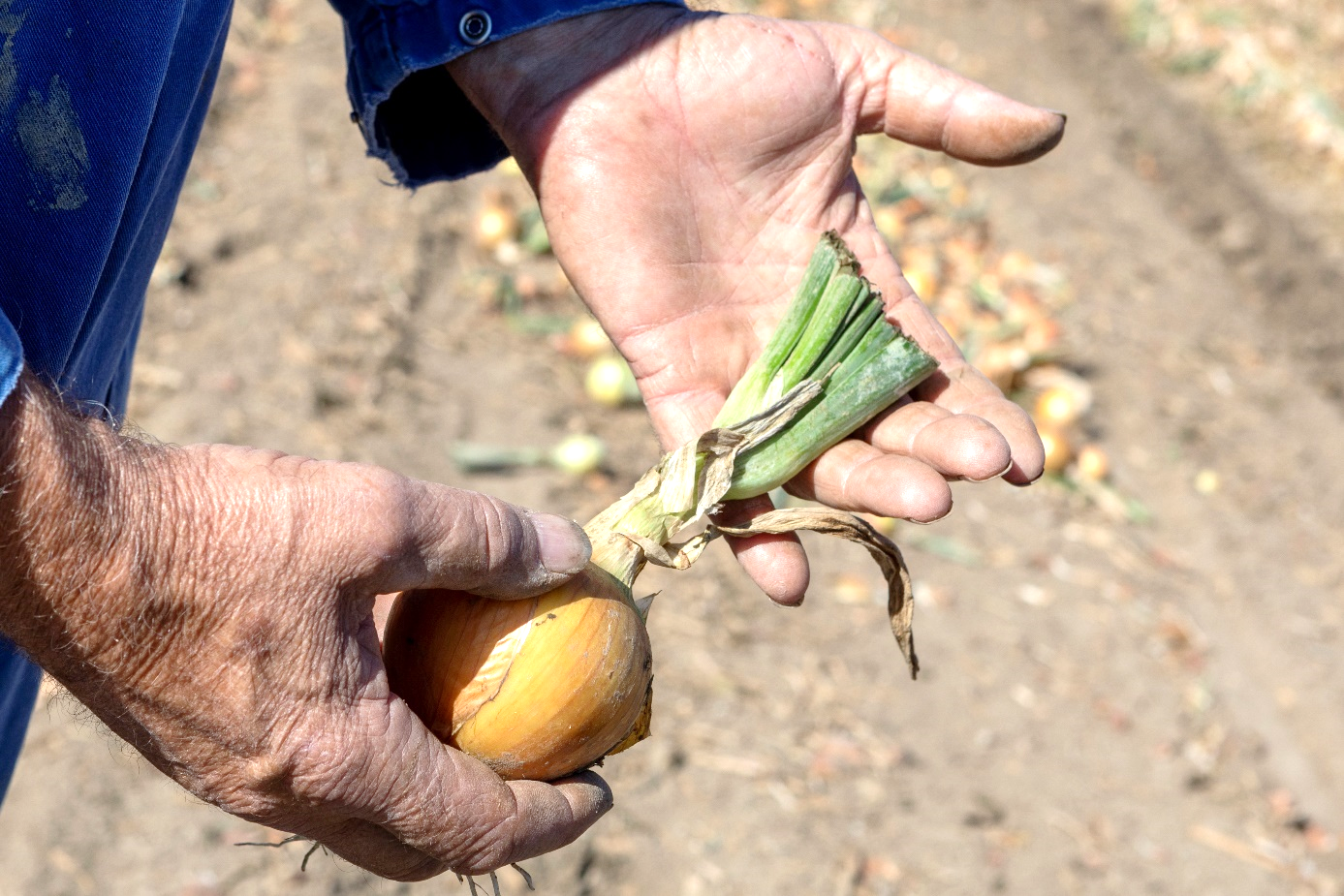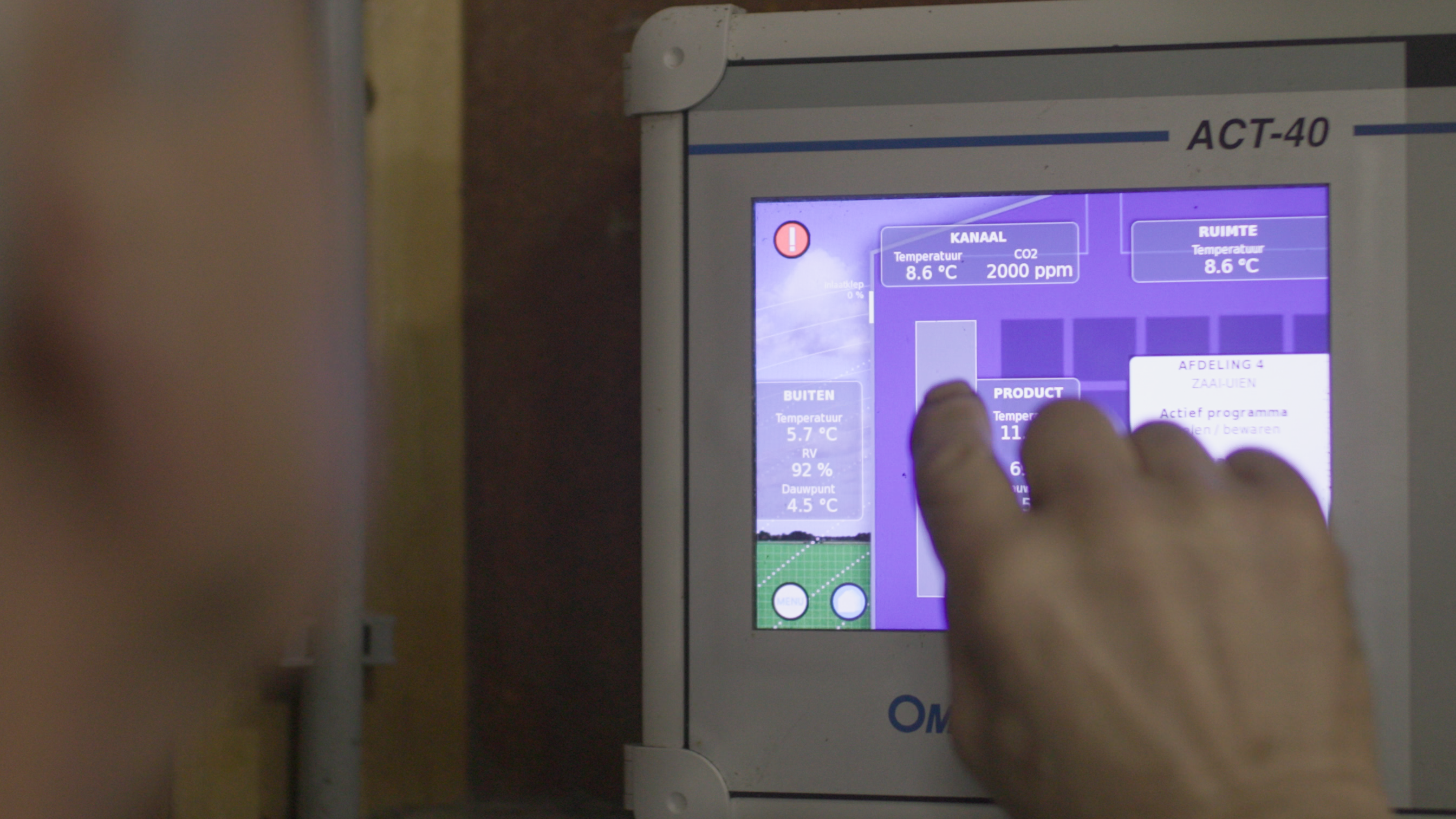the science of drying onions
Drying onions may seem pretty straightforward, but for Dutch growers, it's a delicate dance with Mother Nature every season. In 2023, the Netherlands experienced yet another exceptional growing season, enduring all sorts of weather extremes. Particularly in the southwest, on non-irrigated plots, Dutch onions first struggled to develop due to drought during the growing season and experiencing harvesting under exceptionally wet conditions.
Drying onions is an important process to maintain the quality of the Holland Onion all year round and to limit the penetration of unwanted micro-organisms. By immediately starting to quickdry artificially at 30 degrees Celsius after storing, a significantly faster drying of the neck tissue is achieved and a minimal risk of head rot is achieved. (source: Dutch Uireka report on drying and storage) . The drying process is successfully completed as soon as the neck no longer rolls when you pinch it between your thumb and index finger and the outer onion skirts are containing no moisture.

A good start is half the work
Prior to harvesting, the majority of foliage is first mown or folded. Dutch growers cut the onion foliage just above the division of the youngest leaves, leaving a substantial "grower's knot" of foliage on the onions. Removing this excess foliage helps prevent excessive moisture from entering the storage shed, allowing onions to be dried with less energy.
More or less yield loss
However, freshly harvested onions still retain a significant amount of moisture. Some of this moisture evaporates through the last remnants of foliage, known as the onion tail. Over the years, it has been observed that the moisture lost during drying typically accounts for an average of approximately 6 to 9% of the onion's weight. While this moisture is still present, the batch's humidity remains relatively high, necessitating continued moisture removal. Batches that initially experience greater moisture loss during drying tend to loose less moisture during subsequent drying and storage. Therefore, while drying at higher temperatures may accelerate the process initially, it does not ultimately result in greater yield losses. (source: Uireka report on drying and storage).
Use heat from outside
To save energy costs, the heat from outside can also be used to maximum effect. If the onions can be harvested on a sunny day, a lot of residual heat is immediately driven into the shed. However, excessive sun exposure poses risks of sunburn, potentially rendering the entire onion harvest worthless. To maintain consistent temperatures across batches, it's crucial to store all onions harvested on the same day.
Dutch blush
Research conducted in the Netherlands has indicated that a shorter field period yields better storage quality (source: Uireka report on Neck Rot). To minimize fungal diseases, it's essential to keep the field period brief and commence warming and drying in the shed promptly. Drying should occur rapidly at a temperature of 30°C. The attainment of a high final temperature, such as 30°C, is key, as it also contributes to the distinctive Dutch blush of the onion's tough tunic.
Vapor pressure deficit
The dew point of the air plays a crucial role in determining the rate of moisture evaporation during drying and the energy required for this process. A larger variance between the temperature of the onions and the drying air leads to quicker drying and reduced humidity. For instance, if a stored batch has a temperature of 20 degrees Celsius with a dew point of 16 degrees Celsius, the air must be heated to at least 28 degrees Celsius to prevent immediate cooling of the batch. The additional 8 degrees of heat serves as energy to facilitate the evaporation of moisture from the onions. For instance, if the daytime temperature is 22 degrees Celsius, half of the heat originates from the sun, while the other half is provided by artificial heating. (Source: DLV, Harrie Versluis.)

After-drying
After completion of the drying process, continuous drying may be halted approximately 3 to 4 weeks later, upon reaching a humidity level of 65-70% in the batch, with minimal to no further decrease. Once a decline in batch humidity is observed, efforts are made to maintain a temperature range of 30 to 32 degrees Celsius until the onions achieve thorough dryness. Generally, no additional heating is necessary during the subsequent drying phase. Through daily ventilation lasting one to two hours during the warmest periods of the day, humidity levels are effectively managed in this final stage of drying.
Art
With the surge in exceptionally wet weather conditions—never before witnessed in the Netherlands between October 2023 and March 2024—it's increasingly challenging for Dutch growers to maintain the Holland Onion's dryness. The key lies in avoiding rapid drops in storage temperature, preventing the onion temperature from dipping below the average daily temperature. A prudent Dutch grower closely monitors the annual average temperature, aiming for a product temperature of approximately sixteen degrees Celsius by mid-October. Starting from early December, the temperature is gradually reduced to a maximum of six to seven degrees Celsius. Going colder is not advisable, as onions stored at slightly higher temperatures tend to become excessively damp upon de-storage.

Behind the shelves
With a keen sense of humidity and and, above all, seasoned intuition, Dutch growers orchestrate the drying process of the Holland Onion. A precise storage regime is essential to maintain the quality of stored onions. Patience is paramount. Once tucked away behind the shelves, it's vital to allow Dutch onions to lose their moisture gradually, enhancing flavor, color, and shelf life.
The Holland Onion drying process isn't a high-tech operation but rather a silent, traditionally executed transformation, refined season after season by the Dutch growers.
